Junkyard Gem: 1980 Audi 5000

The first Audi model sold in the United States was the first-generation 100, which made its debut here as a 1970 model and remained available through 1977. For the 1978 model year, the second-generation 100 appeared in North American Audi dealerships, and its model name on this side of the Atlantic was 50 times more impressive: the 5000. Today’s Junkyard Gem is one of those early 5000s, found in a self-service wrecking yard in the shadow of Pikes Peak.
The boxy second-generation 5000 was available in the United States through 1983, after which it was replaced by its sleek C3 successor and its wind-cheating curves and flush glass. While coupe and hatchback versions were available elsewhere, all the 1978-1983 C2 5000s sold here were four-door sedans.
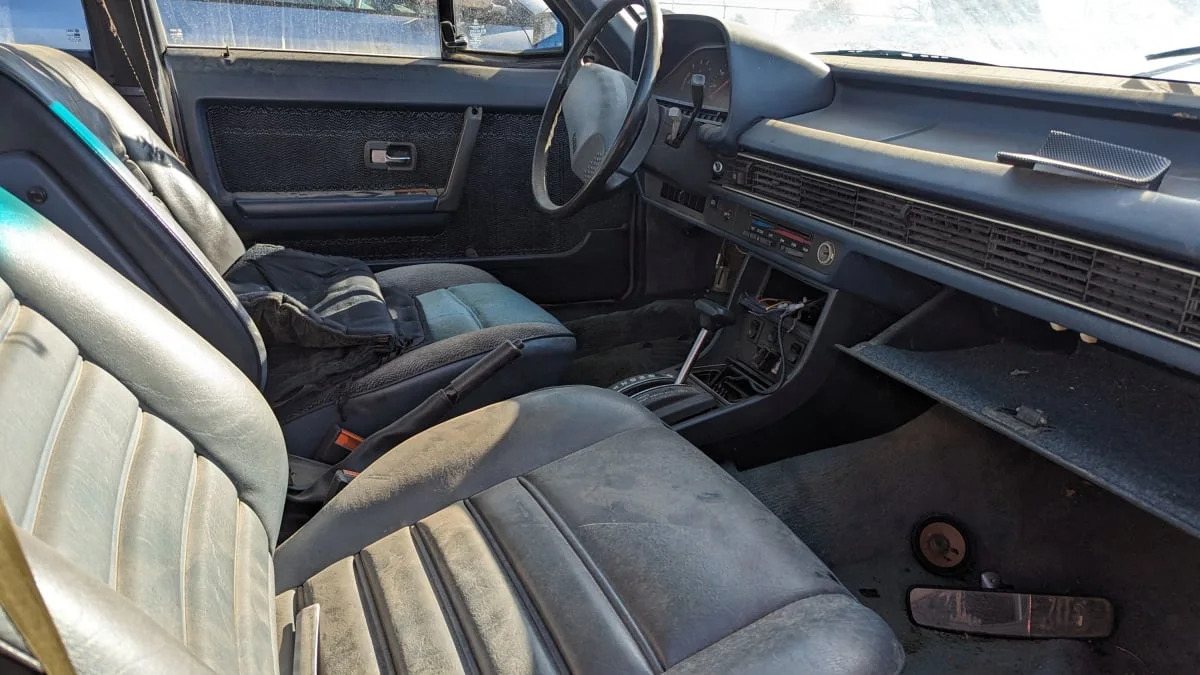
This car’s MSRP was $10,975 with gasoline engine and automatic transmission. That’s about $43,402 in 2023 dollars, placing the 1980 Audi 5000 in about the same price region as the similarly-sized BMW 320i ($11,810), Volvo 264 GL ($11,670), Toyota Cressida sedan ($9,199) and Saab 900 GLE ($10,690).
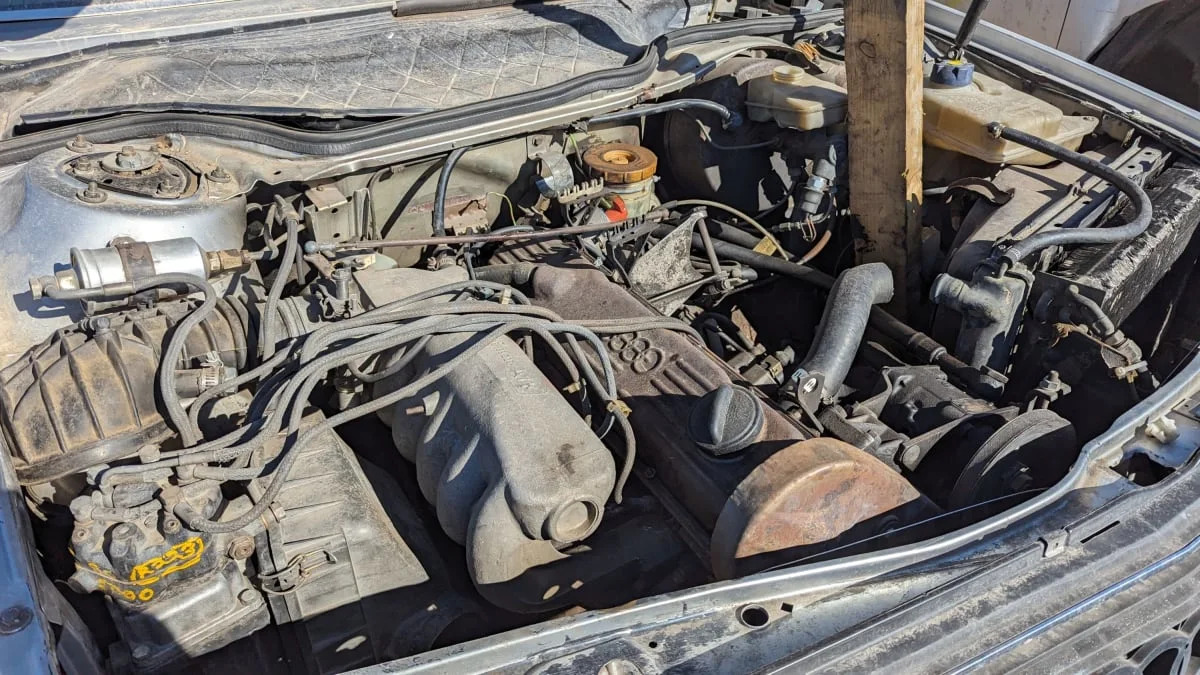
This 2.1-liter SOHC straight-five was rated at 100 horsepower and 110 pound-feet, quite a bit less than its dirtier-running European counterparts.
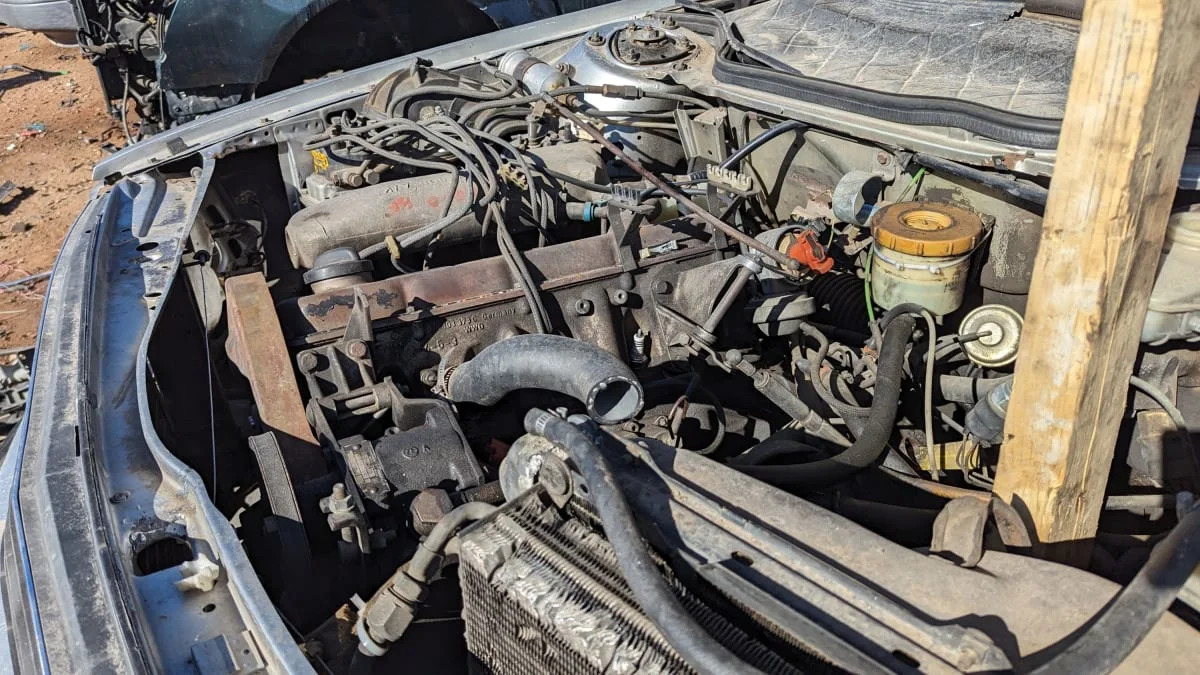
A 130-horse turbocharged version of this engine was available in the 1980 5000, as well as a 2.0-liter diesel I5 rated at 67 horsepower.
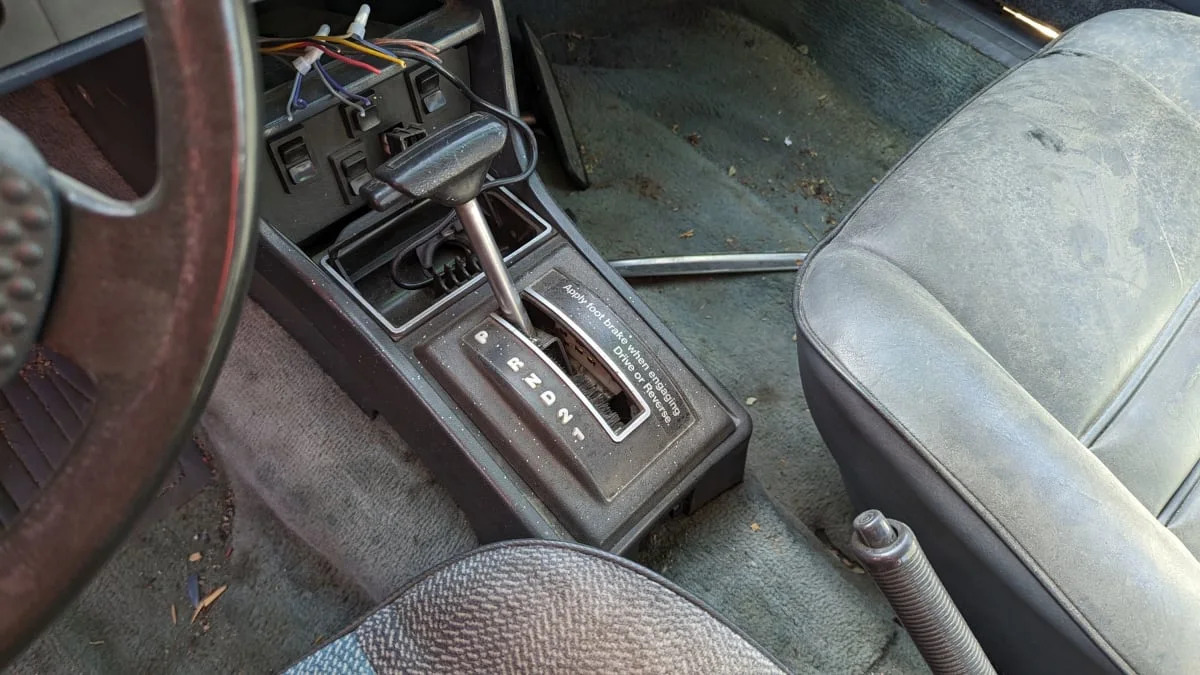
Transmission choices were the base five-speed manual and a three-speed automatic.
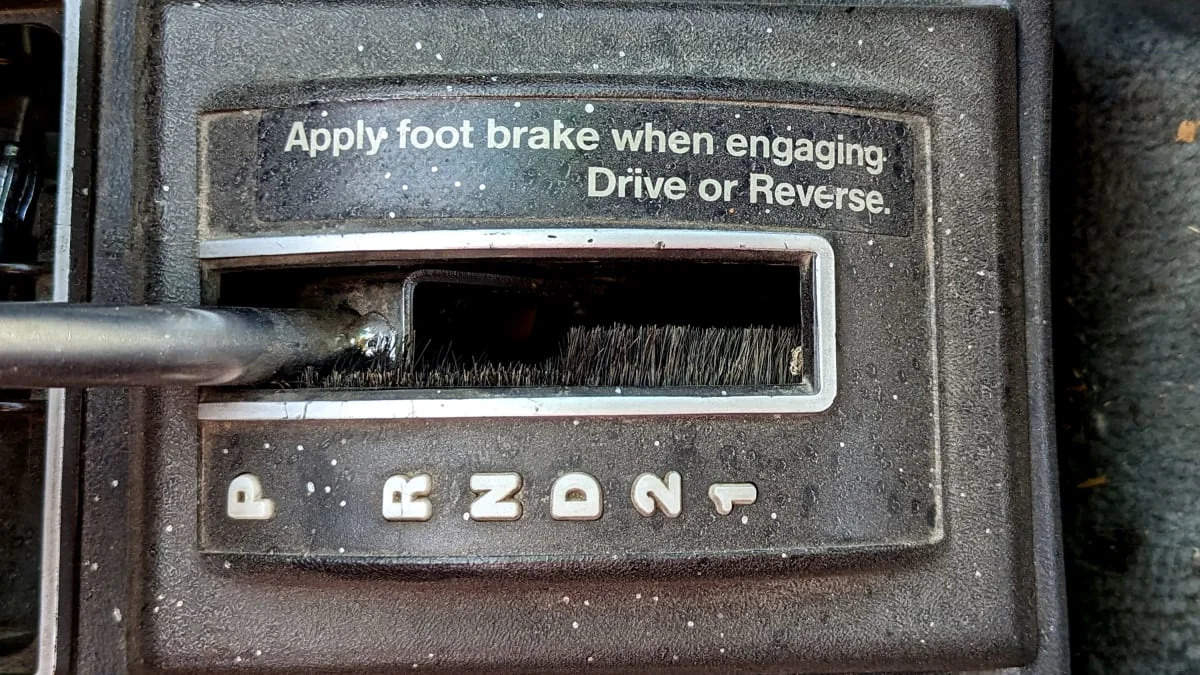
See that Apply foot brake when engaging Drive or Reverse decal, applied a bit crookedly to the shifter bezel? That’s the result of the “unintended acceleration” fiasco that sent American Audi sales into the toilet beginning with the 1986 “60 Minutes” piece and continuing well into the 1990s. Ford had had to apply similar decals to the dashes of 23 million automatic-equipped 1966-1980 vehicles, earlier in the 1980s, but the Ford “Park-to-Reverse” defects didn’t torpedo sales.
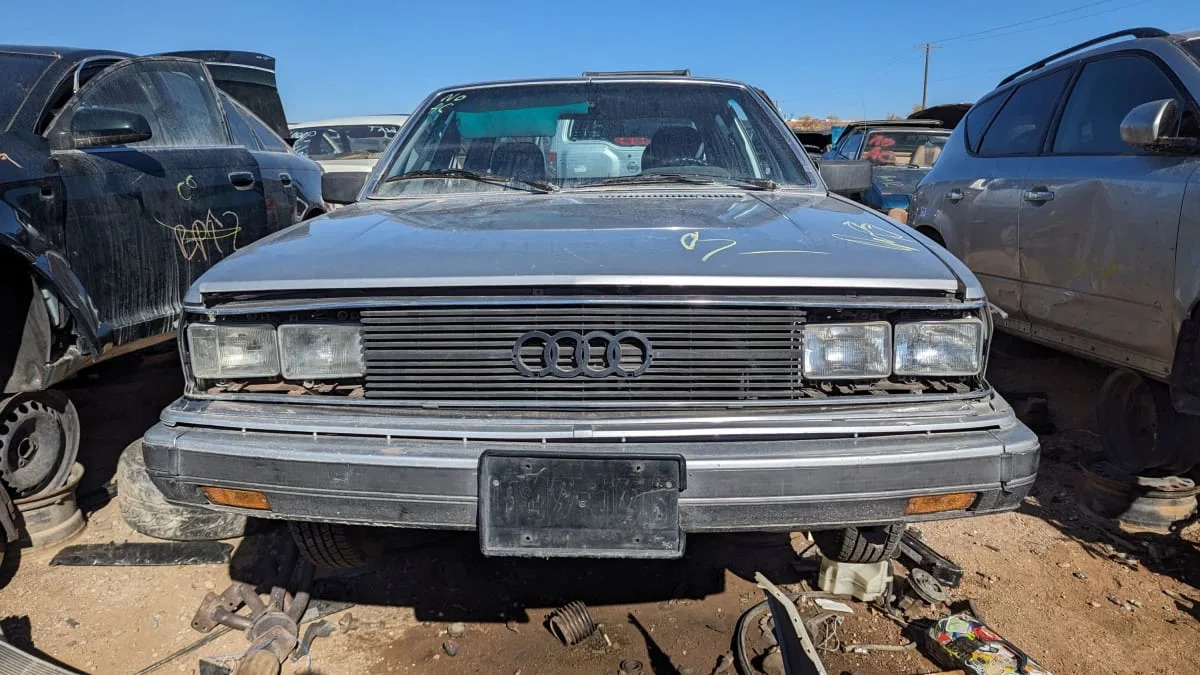
As a result of the bad publicity (which resulted in a catastrophic downturn in sales for all Audi models here, not just slushbox-equipped 5000s), the 4000 got the European-market 80 name for 1988, while the 5000 got the 100 designation here for 1989.
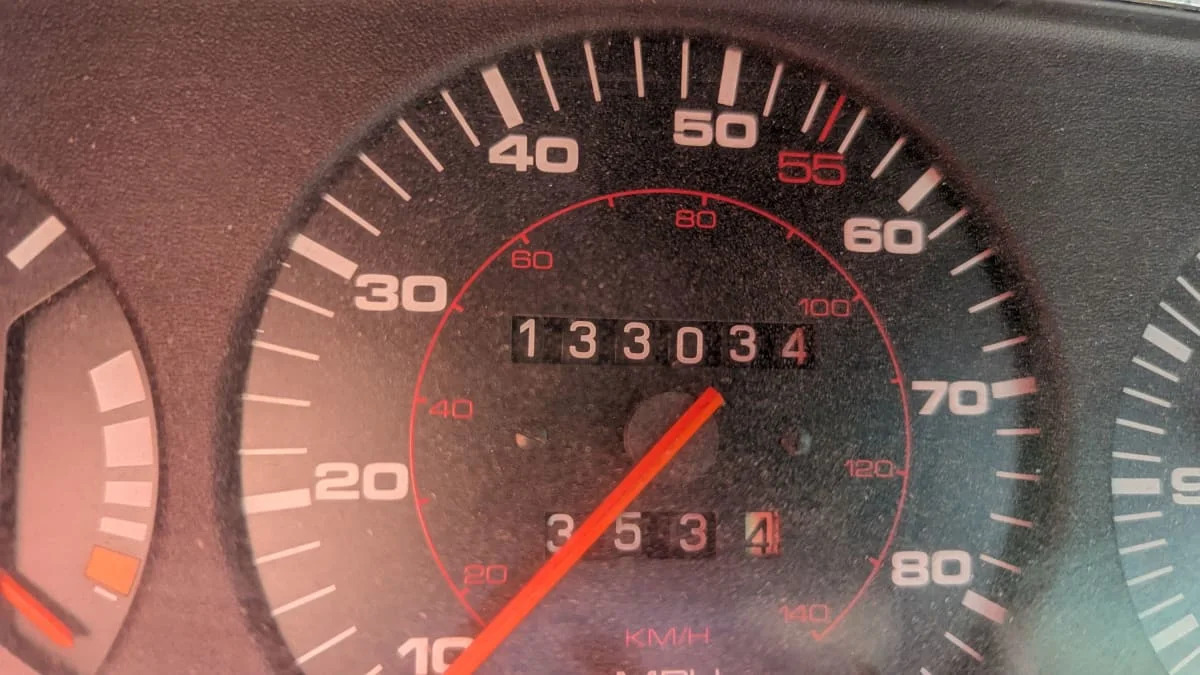
This car was in good shape for its age, and the odometer shows that it traveled just 133k miles during its 43 years of service.
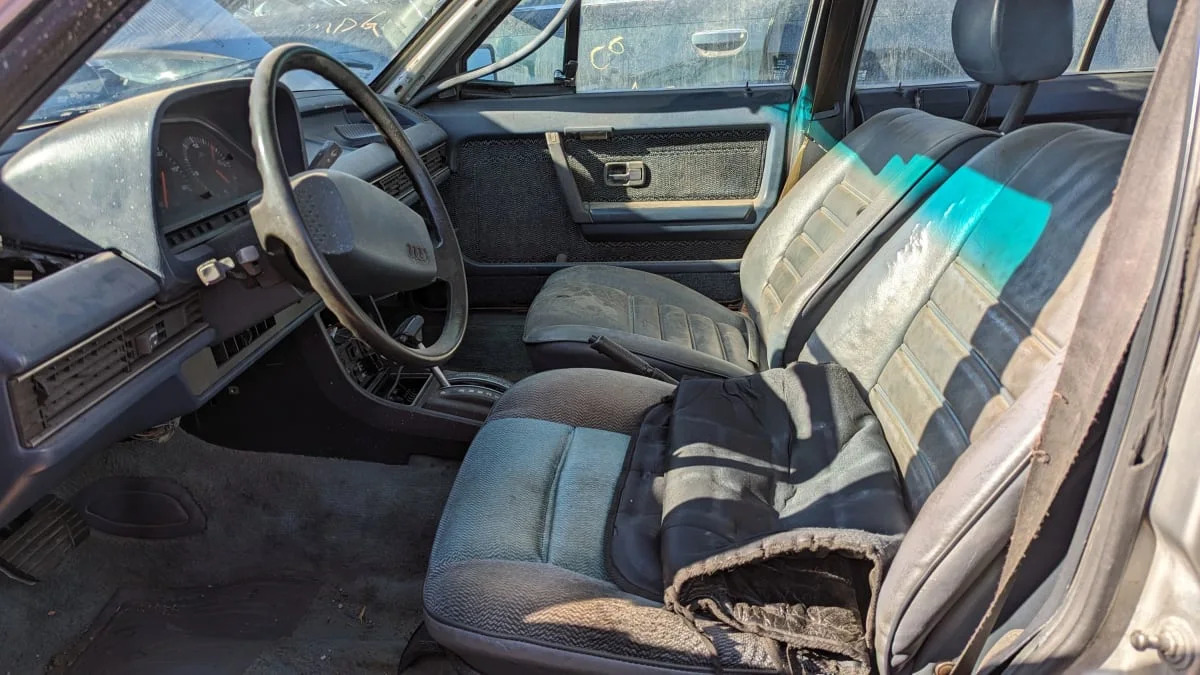
These cars aren’t worth much even when in very nice running condition, so this one didn’t stand much chance of rescue once it entered the junkyard ecosystem.
Makes it easy to live the good life under today’s conditions, which is a very Malaise Era thing to say.
A functional masterpiece and yet one of the most sumptuous cars ever to come out of Germany.







